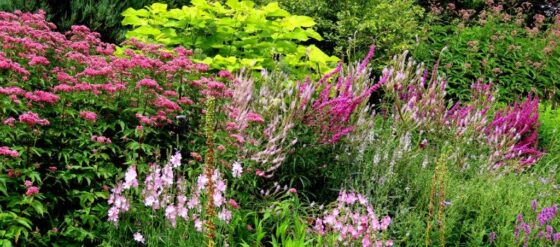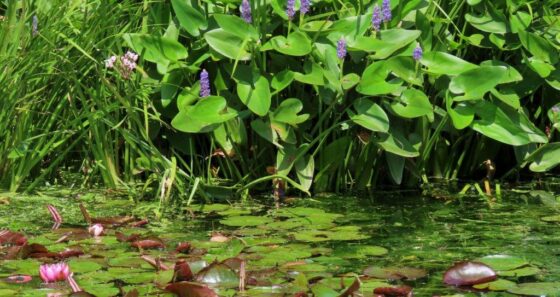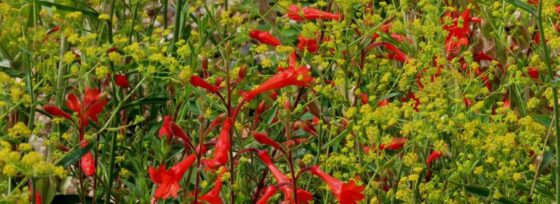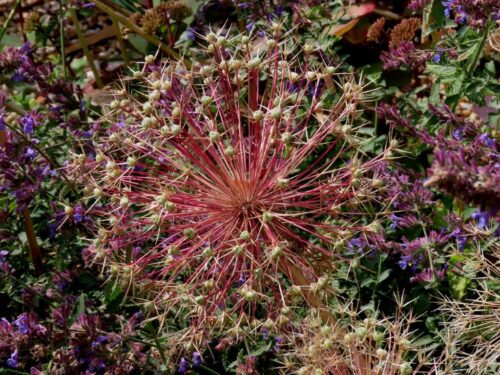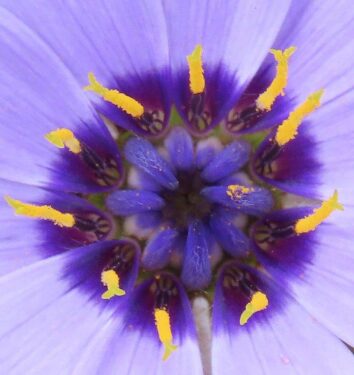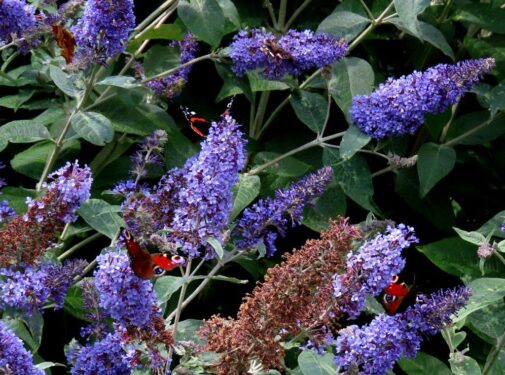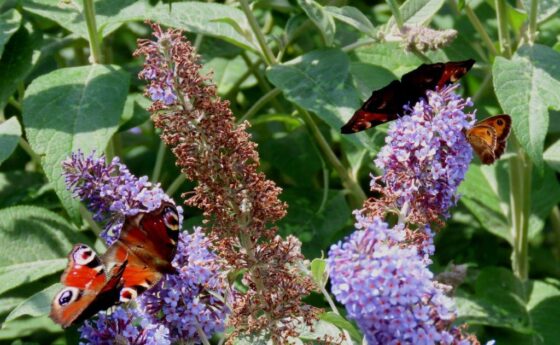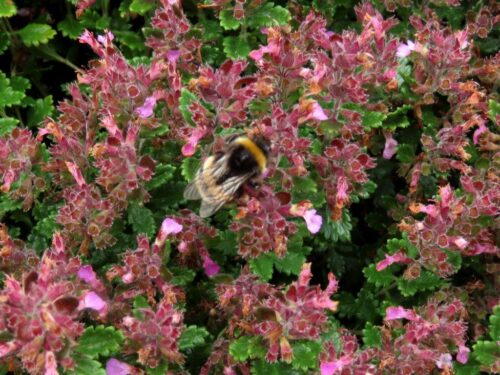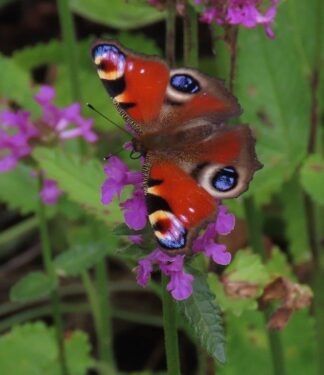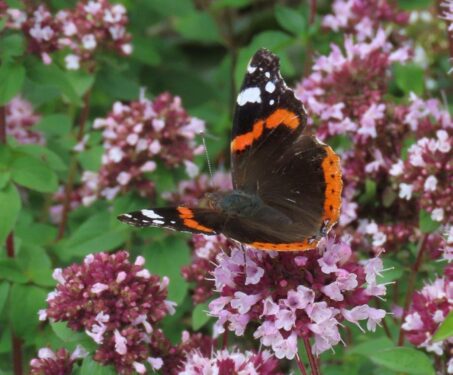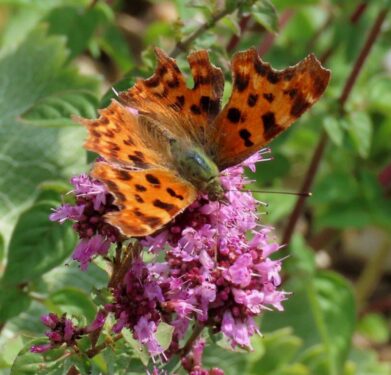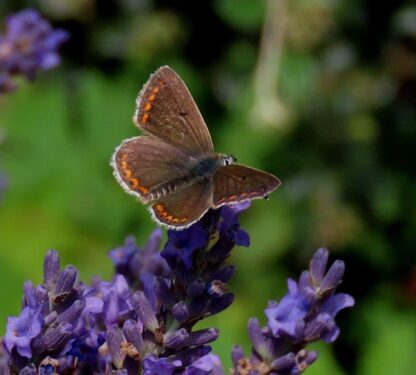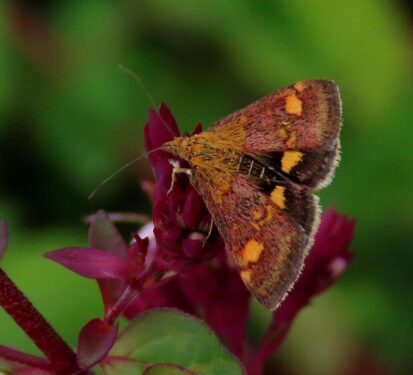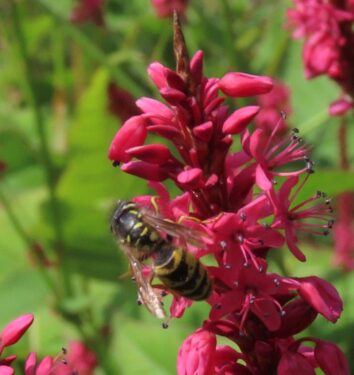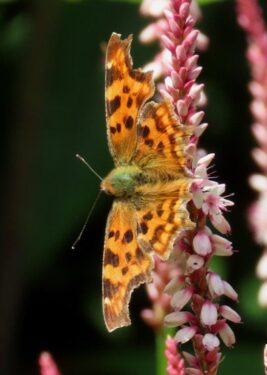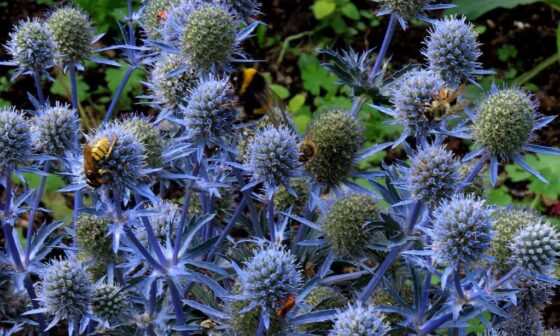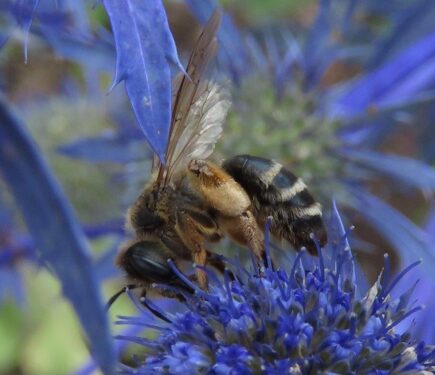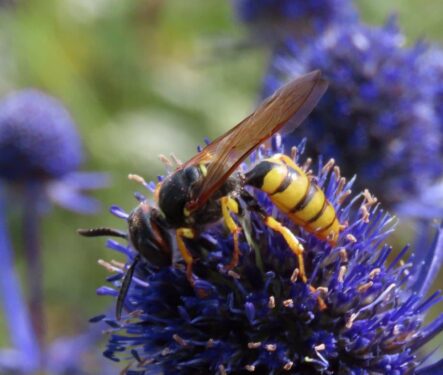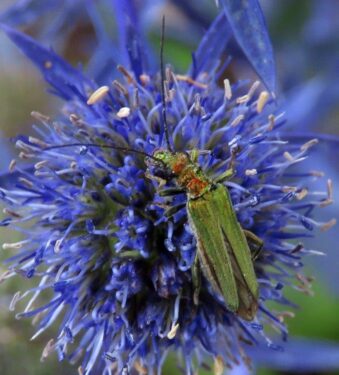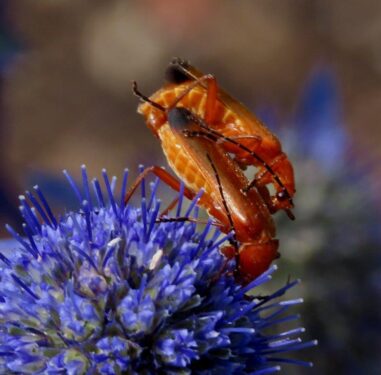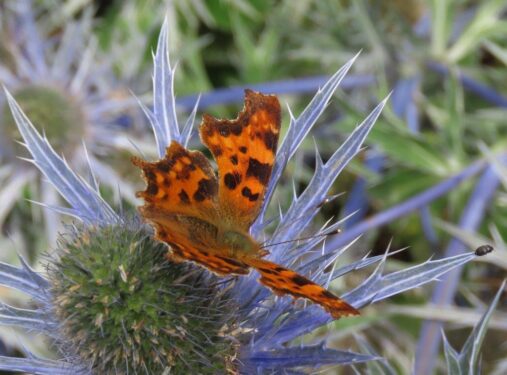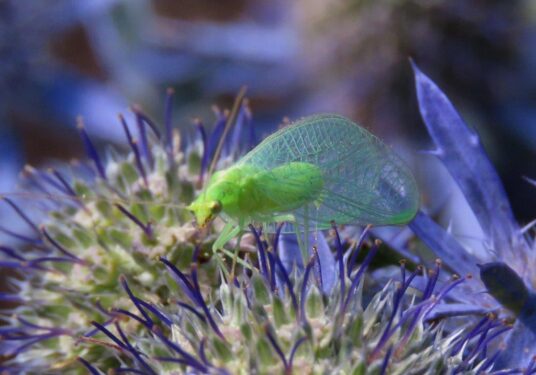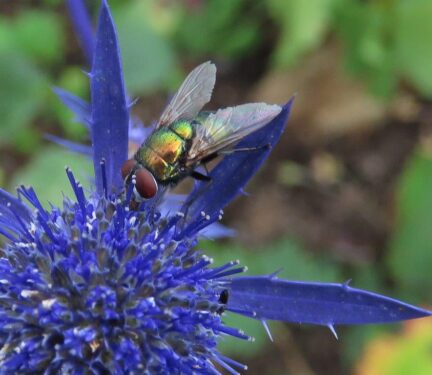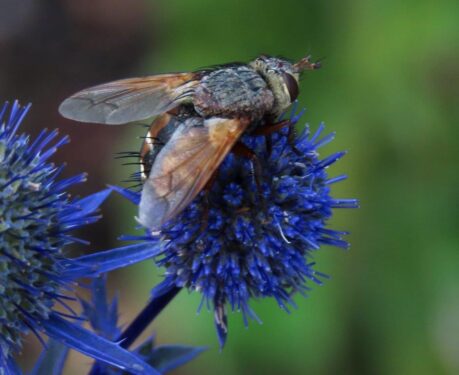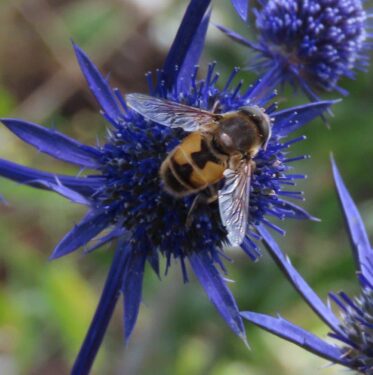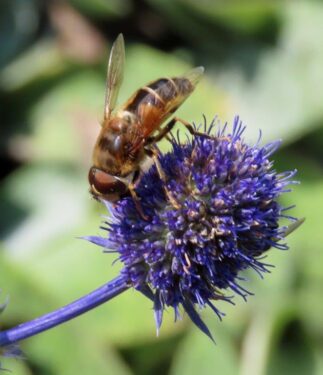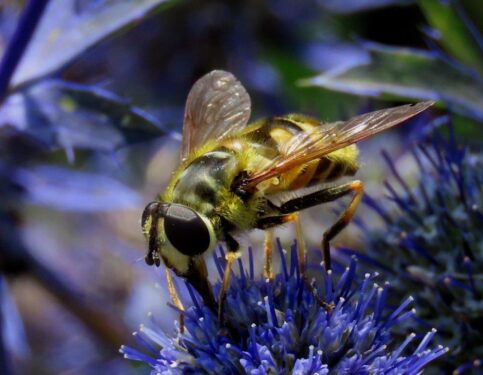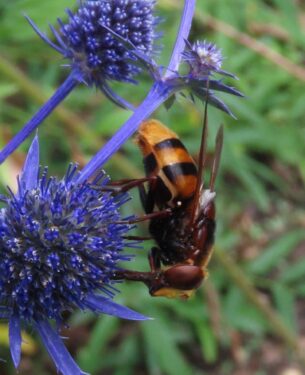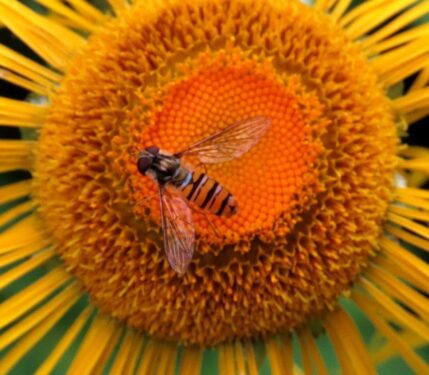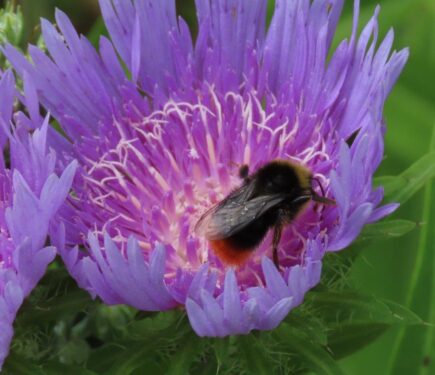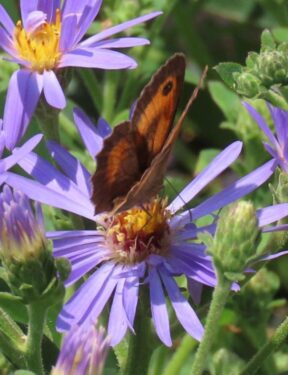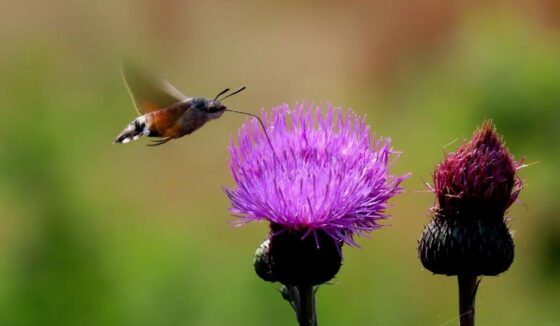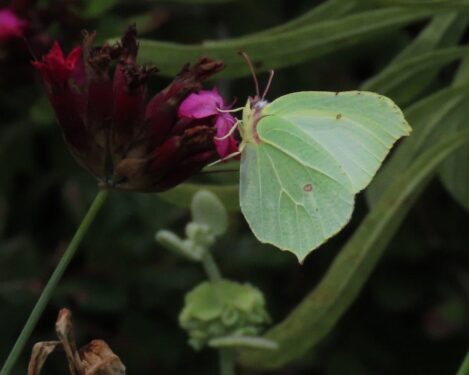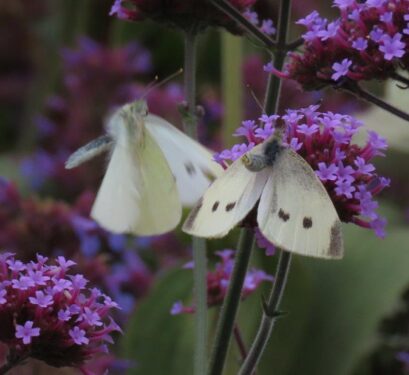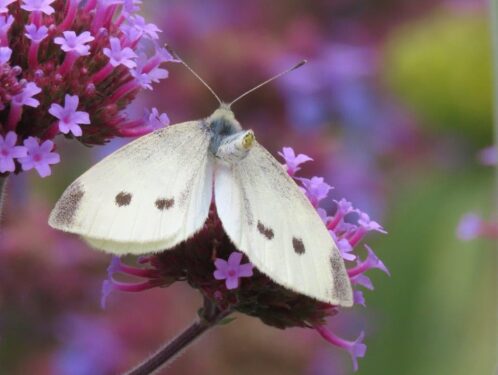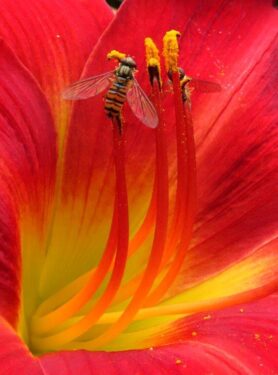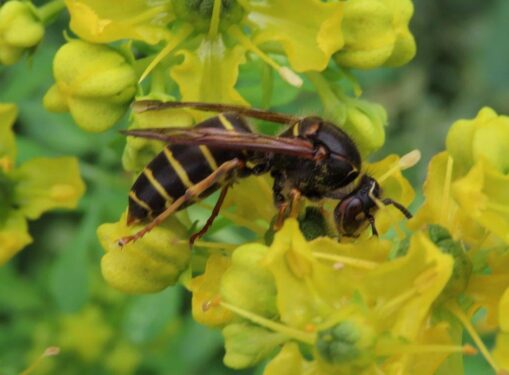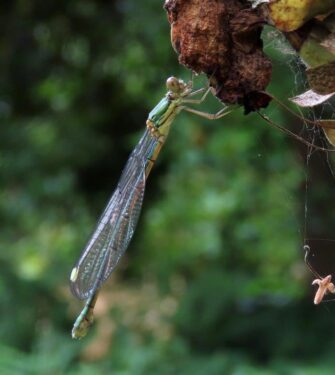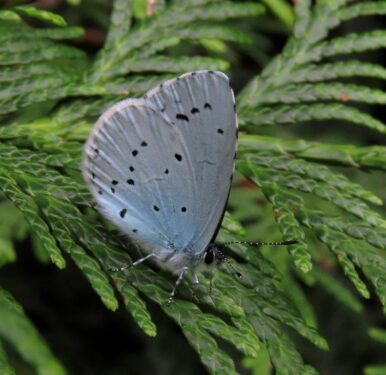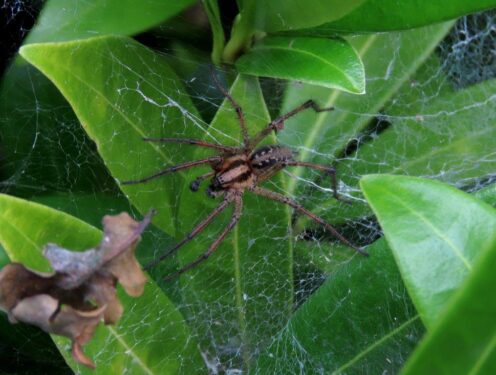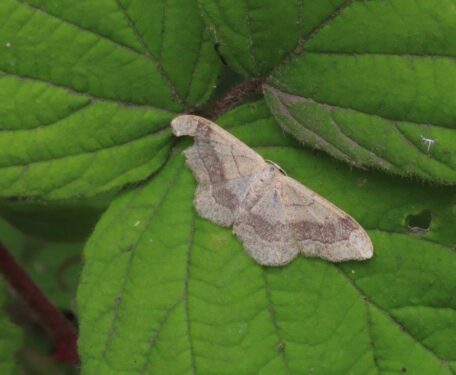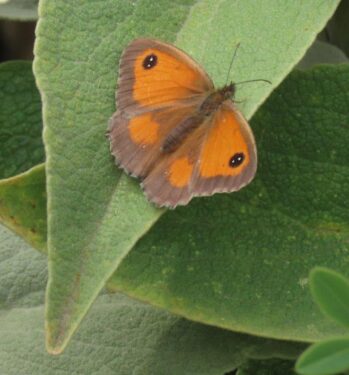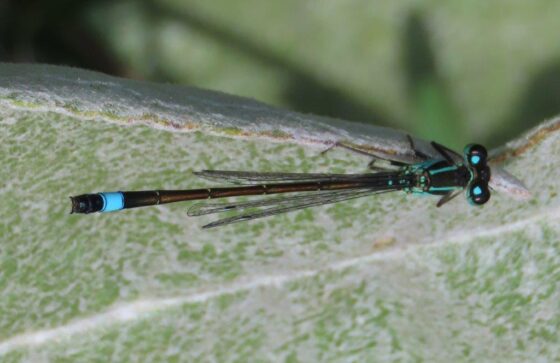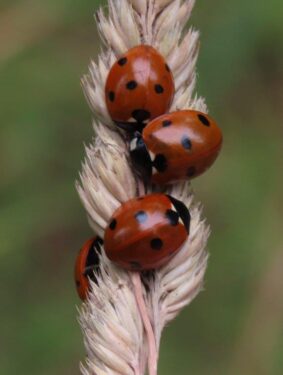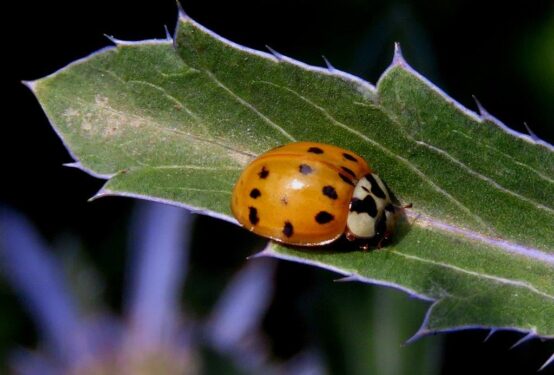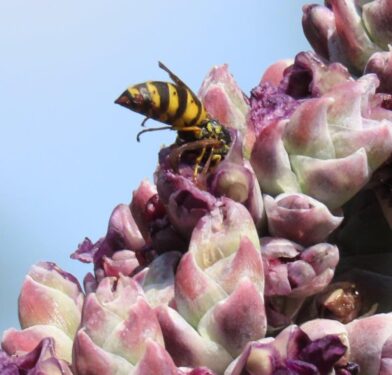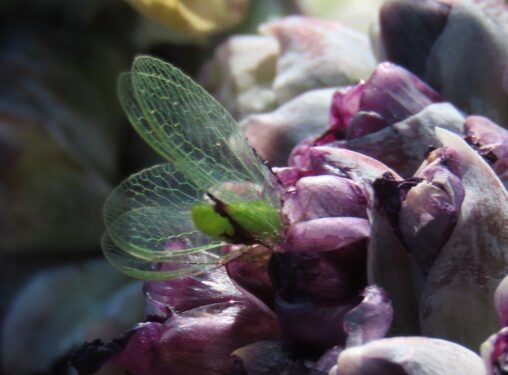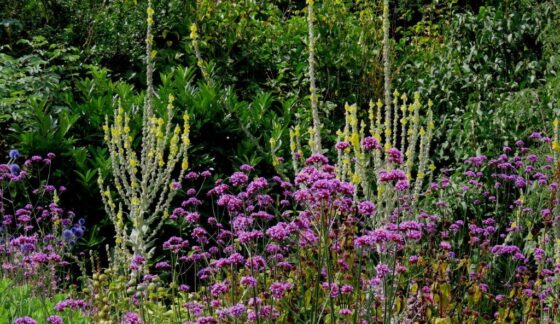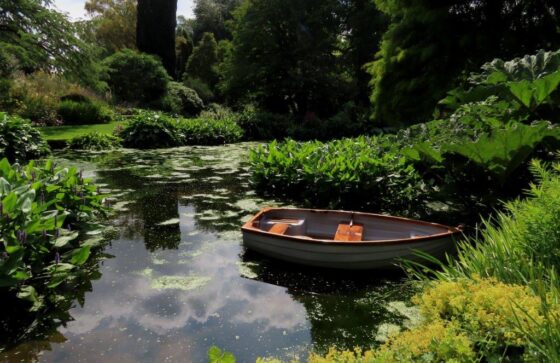Last week, I held the first of my ‘Meet the Wandering Naturalist’ sessions in the Gardens – strolling around in the sun, looking at wildlife for a couple of hours and showing it to any interested visitors. An awful job, but someone has to do it! And the discussions and questions covered a whole series of topics from choosing the right plants to attract butterflies and how to identify the insects in the garden, right down to the practicalities of managing Phormium.
And quite fortuitously, this session coincided with what was the best day for butterflies and other insects I have ever experienced in the garden in 30 or more years of visiting it. At least 15 species of butterfly, some in their hundreds, plus a whole raft of others, from moths to bees, flies and dragonflies made for a very entertaining and engaging morning.
Insects were everywhere, but as always there were a number of stand-out plant performers., one being the Butterfly-bush Buddleia davidii, especially the one in the Scree Garden, next to the fast-fading Buddleia crispa on the house wall, a star performer earlier in the month.
At one time I estimated a couple of hundred individual butterflies of eight species around this one bush: it was almost like a window back into my youth, that almost-forgotten time when in my mind’s eye every Buddleia was covered in butterflies all summer long.
Especially in the Gravel Garden, plants in the mint family Lamiaceae were those drawing in the pollinators. A carpet of Teucrium x lucidrys was literally humming with bumblebees, perhaps 20 in a couple of square metres, many deep within the foliage, giving themselves away by vibrating the shoots….
Together with Origanum, Thymus, Betonica and Lavandula, this family fills the garden with life, sound, movement and scent, with Brown Argus butterflies and Mint Moths in addition to the more numerous species.
In the damper areas of the Water Garden, it was the genus Bistorta doing the heavy lifting, with social wasps and Honeybees in vast numbers:
And so to the Reservoir Garden and the star performers to beat them all, Eryngium. At their very peak, the sea-hollies (especially Eryngium planum ‘Blaukappe’) were covered in an array of bees, wasps (including dramatic Bee-wolves), beetles, butterflies and lacewings, greenbottles, tachinid flies and hoverflies, including the very largest, the Hornet Hoverfly.
Particularly in the latter part of the summer, it is members of the daisy family Asteraceae that will take over lead responsibility for feeding the flocks, and all through the gardens this is starting to happen, including Hummingbird Hawk-moths on Cirsium.
Aside from all the plants mentioned above, so numerous were the insects that they were visiting the whole range of available flowers. A Brimstone enjoyed Dianthus, and Small Whites were frisking and frolicking wantonly on the Verbena…
Deep in the day-lilies, hoverflies were browsing on pollen. Although we usually think of flies supping nectar, they do need a pollen meal to get the nutrients needed for sexual maturation, and of course this contact with pollen is what makes them as valuable as bees for pollination.
And then on the Ruta flowers, and only those specific flowers so far as we could see, several examples of a large, unfamiliar wasp. These were Median Wasps, first found in Britain in 1980 and spreading, albeit still uncommon in Essex.
Of course, flowers are not everything, and there were invertebrates everywhere, including several Willow Emerald damselflies and an impressive Labyrinth Spider.
Readers of these blogs may remember one from 2020 Murder at the Garden Pond: Thalia dealbata – the (not very) beautiful assassin | Chris Gibson Wildlife. This detailed the antisocial, pollinator-killing habits of Thalia dealbata, and led to my increasing involvement with the Beth Chatto Gardens. One of the talking points during my garden session was this, as the ‘killing fields’ had just been initiated as the flowers opened. However, very much to their credit, the staff were straight in there removing the flower-stalks, to save the insects from a lingering death while allowing the stately beauty
If anyone would like to join me in the garden looking at its wildlife, I am planning on repeating this (weather permitting) on 4th August, 18th August and 1st September, between 1100 and 1300 each day. No need to book, just come to the garden (normal entry price – see our website for details) and ask at the Visitor Information Centre where I will be and when, and come along and find me!
